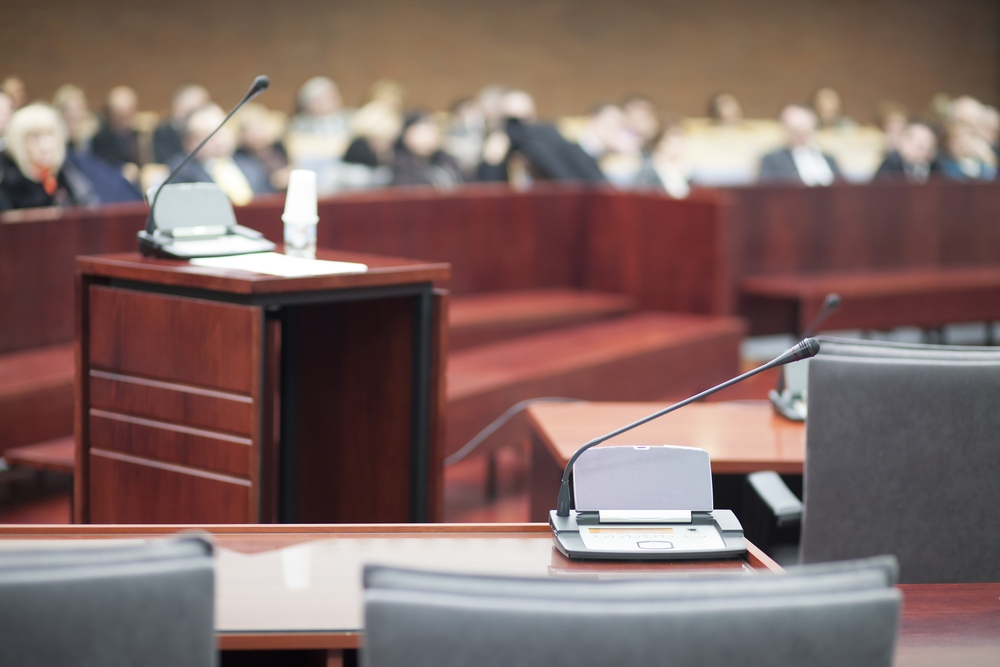Part 35 questions are commonly used and occasionally abused by legal representatives to try to shape the evidence of experts instructed by an opposing party. Drawing on recent experience from their case-load as well as reported decisions, Julian Chamberlayne, Head of the Aviation and International Injury department, and Peter Hale, paralegal in the International Injury team, examine this tactic and the current guidance from the court on how to address questions which go too far.
Introduction to Part 35
Part 35 of the Civil Procedure Rules governs the use of evidence from experts and assessors in civil proceedings. Further guidance is provided in the associated Practice Direction 35 and in the ‘Guidance for the instruction of experts in civil claims’ published by the Civil Justice Council in August 2014. This guidance replaced the previous protocol on the same topic with effect from December 2014.
The CPR, the Practice Direction and the guidance concern experts who are giving or preparing evidence to be used for civil proceedings. On occasion, such as at the early stages of investigations into liability and causation, experts are instructed to provide a report on an “advice-only” basis prior to or during proceedings. Such advice is not designed for use in court and is of a different character to CPR Part 35 evidence, so these rules do not strictly apply. However, the guidance and principles are worth bearing in mind even when preparing a report on an advice-only basis.
Controls on expert evidence
Whenever considering the implications of Part 35, it is important to bear in mind the central tenet of the rules, set out in CPR 35.1: “Expert evidence shall be restricted to that which is reasonably required to resolve the proceedings.”
This idea is further reinforced by the tone of CPR 35.4(1): “No party may call an expert or put in evidence an expert’s report without the court’s permission.”
The emphasis is on restricting expert evidence as far as possible and only allowing the same if it is necessary to determine a claim. Why? Because experts provide opinion evidence. Unlike a factual witness, they have no first-hand knowledge of the tort or breach of duty which has befallen a claimant, or of the type or the magnitude of the losses that have been suffered. These areas are the domain of lay witnesses. Notwithstanding this, in catastrophic injury claims, an expert’s evidence is almost always central to the resolution or determination of the litigation. As a result, careful controls have to be placed on when and how expert evidence can be adduced by parties to a dispute and these rules are set out within CPR Part 35.
Written evidence
Historically, (and in certain contexts still currently), witness evidence was provided orally at trial. Even now, CPR 32.4 defines a witness statement as “a written statement signed by a person which contains the evidence which that person would be allowed to give orally”. This is not so for expert reports. The presumption outlined in CPR 35.5(1) is that “expert evidence is to be given in a written report unless the court directs otherwise”.
Lay vs expert witness evidence
Another key distinction between expert and lay witness evidence is that although lay witnesses must be truthful, they owe no duty to the court. This is a necessary consequence of claimants and defendants often being witnesses themselves. Parties are obliged to assist the court “to deal with cases justly and at proportionate cost” (pursuant to CPR 1.3). However, imposing on witnesses or parties any more burdensome duty, (such as imposed on experts by CPR 35.3, ie “to help the court on matters within their expertise”), would be artificial in practical terms.
The requirement for experts to assist the court overrides any obligation to the party who has instructed the expert or who is responsible for paying the expert. This duty of impartiality, combined with the reliance on written evidence, has given rise to the need for a system whereby opposing parties can put written questions to experts on the content of their reports.
Restrictions on questions under CPR 35.6
Despite the need for a mechanism to pose written questions to experts, not every type of question is permissible. CPR 35.6 governs the manner, form and substance of the questions that may be asked in three ways:
- Pursuant to CPR 35.6(1), questions must be “proportionate”. This is a later addition to the original rule reflecting a desire on the part of the court to restrict parties from submitting lengthy and complex questions to experts under CPR 35.6.
- Pursuant to CPR 35.6(2)(a) and (b), questions must be put only once and within 28 days of service of the report by the instructing party on the other parties. If an expert receives multiple sets of written questions or receives a set of questions in respect of a report that was finalised many months ago, they should first check with their instructing solicitor before answering the questions. These rules can be varied by mutual consent of the parties, so it is possible the questions will need to be answered but it is always worth checking first.
- Pursuant to CPR 35.6(2)(c), questions “must be for the purpose only of clarification of the report unless in any case – (i) the court gives permission; or (ii) the other party agrees”. Subject, therefore, to any agreement between the parties or the court granting special permission, every Part 35 question must satisfy this test.
No definition of “clarification” is provided within the CPR or the accompanying Practice Direction. However, the notes which appear below CPR 35.6 in the White Book (a compendium of and commentary on the CPR and Practice Directions) state: “It would seem that questions should not be used to require an expert to carry out new investigations or tests, to expand significantly on his/her report or to conduct a form of cross-examination by post.”
Questions that fail to meet this test generally fall into one of two categories: on the one hand are the questions that do not truly relate to clarification of the report and on the other hand are the questions that stray into the area of cross-examination.
Examples of unacceptable / disallowed questions
Reported cases
Wilson v Al-Khader [2015] EWHC 4240 (QB) (29 July 2015) concerned a female claimant (Mrs Al-Khader) who, as a result of an accident, descended into and remained in a persistent vegetative state. The claimant’s expert stated in his report: “With the present regime of care Mrs Al-Khader could survive for many years to come.”
The defendant’s solicitors asked that expert 14 questions, including the following:
- What is the anticipated life expectation of a woman in a vegetative state following traumatic brain injury aged 40? And
- How many years is it likely, in your opinion, Mrs Al-Khader will survive?
The claimant’s solicitors felt that it was “potentially prejudicial to the claimant for detailed life expectancy evidence to be provided now before all the appropriate factual information is obtained [through the necessary documentary, witness and expert evidence]” and accordingly advised the expert not to answer the question. The expert’s response was therefore: “I am advised that my detailed opinion regarding [life expectancy] will be dealt with at a later stage of the litigation process.”
At a case management hearing, the defendant asked the master to make an order requiring the expert to answer the questions fully. The expert wrote a letter which was placed before the master confirming that he did not feel he had the relevant information to answer the questions in an accurate way though if the court insisted that he should, he would endeavour to do so.
The master refused to order the expert to answer the questions and the defendant appealed to a High Court judge, who was therefore required to consider whether the questions really sought “clarification” as provided for by CPR 35.6. The judge held that the questions were in reality “invitations to express an opinion that, conspicuously, the expert in question had not expressed in [his] report”. They called for “the expression of additional opinions” and the judge held that the questions were not “legitimate” CPR Part 35 questions. Accordingly, the master had been entitled to refuse to order the expert to answer them and the defendant’s appeal failed.
Mustard v Flower & ors [2019] EWHC 2623 (QB) (11 October 2019) concerned questions put by the claimant’s solicitors to experts instructed by the defendants. These questions were lengthy and complex and ran to many pages, including “a mass of enclosures” listed at the foot of each questions comprised of consultation recording transcripts, academic and research literature and witness statements.
One set of questions, sent to the defendant’s neuropsychology expert, contained 47 discrete questions, with many consisting of multiple sub-parts. The High Court master remarked in his judgment: “I have never before encountered a set of questions to experts even remotely approaching the scale and complexity of these.”
As a result of the extensive questions and other issues in the case (including the covert recording of the experts’ examination of the claimant), six of the defendants’ experts wrote to the court seeking directions (as to which, see further below). The master was accordingly required to consider whether to allow the questions or to set them aside.
The master decided to disallow the questions. In doing so, he stated his view that the questions “(i) [were] wholly disproportionate”, “(ii) [were] overwhelmingly not for the purposes of clarification and (iii) amount[ed] to cross-examination.” (Compare these reasons to the requirements set out above under ‘Restrictions on questions under CPR 35.6’.) Notwithstanding his decision, the master agreed with the claimant’s solicitors that the questions were relevant and, in part, addressed what were accepted to be omissions in the defendants’ experts’ reports. However, the proper way of addressing those issues was by the provision of supplementary reports as required and through the process of joint meetings and joint statements. Those joint meetings and statements were likely to render “whole swathes of the questions” redundant.
Our cases
Stewarts has dealt recently with a number of cases involving unacceptable Part 35 questions which have been disallowed or criticised by a master. Some paraphrased examples are set out below. (The first five examples are taken from the decision of Deputy Master Leslie in Madden v B24 Ltd. & Eon Productions Ltd., heard in the High Court at the Royal Courts of Justice, 7 August 2019, unreported.)
In a case where a leading member of a particular profession was providing expert evidence on the claimant’s future employment prospects in that profession:
- Please confirm that the last time you undertook full-time work [in a particular role] was 2007 and therefore that you retired from this type of work at age 75?
- Since 2001, you have worked in multiple consultancy roles. Please explain further what type of work these roles consist of, what the demands of these roles are and whether it is something [the claimant] could consider?
- You state that [certain roles] would involve working 11 to 16-hour days for five or six days a week. Is that how often you work in your current and previous roles following retirement?
On our advice, the expert declined to answer these questions. They were described by the master as “a classic cross examination question” aimed at making the point that the relevant expert was “a dinosaur”. The master disallowed all of the questions.
To an orthopaedic expert in relation to x-ray imaging:
- You describe having detected “a touch of degeneration”. Please could you offer a view as to why [a radiologist] did not reach the same conclusion.
The expert responded: “I am unable to comment as to why [the radiologist] did not pick up the touch of degeneration. That question should be directed at him.”
The master considered that the question had been answered so robustly that it did not need to be disallowed. The expert’s response showed the question to be inappropriate.
To a vascular surgery expert who had recommended annual ultrasound monitoring:
- During his re-assessment with [the psychiatry expert], [the claimant] said he has struggled to cope with the numerous medical assessments which have taken place since the accident occurred and he would like to move on from this. Bearing this in mind, do you consider it likely [the claimant] will attend for ultrasound imaging on an annual basis?
The expert responded: “My involvement with [the claimant] relates to the management of his circulatory problems. It is outside my area of expertise to comment on any psychological consequences relating to this or the need to undergo multiple medical assessments. I do not feel this is a relevant question for me to answer.”
Again, the master felt that this question had been so robustly answered by the expert concerned that he did not need to disallow it. The master agreed with our submission that this was a question for the claimant in cross-examination. The expert’s professional recommendation for annual imaging and the claimant’s desire to avail himself of that recommendation post-settlement were entirely separate issues.
The master was heavily critical of the defendants’ solicitors conduct in attempting to put these cross-examination questions to the experts by way of Part 35 questions. It reflected an attitude of “let’s have a try” and it was only by virtue of the experience of the experts as medico-legal witnesses that the questions had been “seen off”. The master expressed concern that a less experienced expert may have felt pressured into answering the inappropriate questions.
In another case recently resolved by Stewarts, rather than being disallowed by the court, a Part 35 question was successfully rebutted by one of the parties. In this case, the second defendant had served an expert report but the first and third defendants (jointly represented) had declined to do so. The solicitors for the first and third defendants then posed the following question to the second defendant’s expert:
We ask that you confirm the following:
- That the conclusions detailed in your report [at para] apply to the claims against the first and third defendants as well as the second defendant,
- If the conclusions do not apply to the claims against either the first or third defendant, for any reason, that you please explain why this is so.
The solicitor for the second defendant then, quite rightly in our view, objected to the question, commenting: “If you wished an expert to consider the particular situation of your own clients (together with any particular facts affecting them) then you should, in our view, have instructed an expert to do so. We did invite you to instruct our expert on a joint basis, but your client declined.”
In the face of this objection, the point was not taken any further by the solicitors for the first and third defendants who thereafter lacked any expert evidence in support of their clients’ case.
How to deal with unacceptable questions
If you are faced with Part 35 questions which you are unsure about answering, you should always check with your instructing solicitor before answering the questions. This is particularly important where the questions have been sent directly to you and not via your instructing party’s solicitors. This practice is permissible (PD35 para 6.1). However, the party asking the questions is required to send copies of the questions to the instructing party at the same time. You should be conscious that your instructing party’s solicitors may not have received or reviewed the questions by the time they have reached you for your consideration and response.
If in doubt, check with the instructing party’s solicitors. The notes that appear below CPR 35.6 in the White Book suggest that if you receive a set of questions which you consider go beyond the spirit of the rule, the right approach is to answer the clearly relevant questions and to decline to answer the remainder if (i) to do so would clearly be prejudicial to the instructing party’s position or (ii) the time and costs of replying to the questions is disproportionate.
However, this suggestion was queried by the experienced master in Mustard v Flower (referred to above). He said: “It is undesirable that the experts themselves should be forced to make a value judgment about the appropriateness or proportionality of a question, or set of questions, before choosing whether to answer. It is equally undesirable that they should have to formulate and express reasons why they choose not to answer. Questions should not be framed in a way that requires such judgments or explanations, which are the province of the lawyers not the experts. To the extent that the commentary to CPR 35.6 suggests otherwise, I respectfully disagree.”
It is also important to recall that “relevance” is not the test for whether a question under Part 35 is legitimate. In Mustard v Flower, the master disallowed questions on the basis that they were disproportionate cross-examination points not aimed at clarification, despite finding that they were “relevant” to the issues in the case.
If for any reason, mindful of your duty to help the court on matters within your expertise, you are unsatisfied with the advice provided by your instructing party’s solicitor as to whether a Part 35 question should be answered, you can apply to the court for directions under CPR 35.14. The request should refer briefly to the history of your involvement in the matter (ie your instruction as an expert; the preparation of your report(s); the questions received; and whether your instructing solicitor has advised you to answer the questions or to contact the court) and then set out concisely and directly your query in relation to answering the questions. You should avoid including any privileged information or legal advice in your request to the court.
You must send a copy of your request for directions to your instructing party at least seven days before filing the request at court and to any other parties four days before filing the request (excluding weekends). Your instructing party’s solicitor ought to assist you with the filing of the request, although if this is not possible, it can be filed at court by simply sending a letter to the relevant court which states the parties’ names, the claim number and, where known, details of the master or judge with conduct of the claim and any upcoming hearing dates.
In summary:
- Under Part 35, the questions a party may pose to another party’s expert must be proportionate and restricted to clarification of the expert’s report only,
- If in doubt, do not answer the question. Seek guidance from your instructing solicitor or, if that does not resolve matters, from the court,
- Remember that your overriding duty is to assist the court on matters within your expertise and this displaces any duty to your instructing solicitors.
This article was written by our senior paralegal Peter Hale
You can find further information regarding our expertise, experience and team on our International Injury pages.
If you require assistance from our team, please contact us or alternatively request a call back from one of our lawyers by submitting this form.
Subscribe – In order to receive our news straight to your inbox, subscribe here. Our newsletters are sent no more than once a month.






